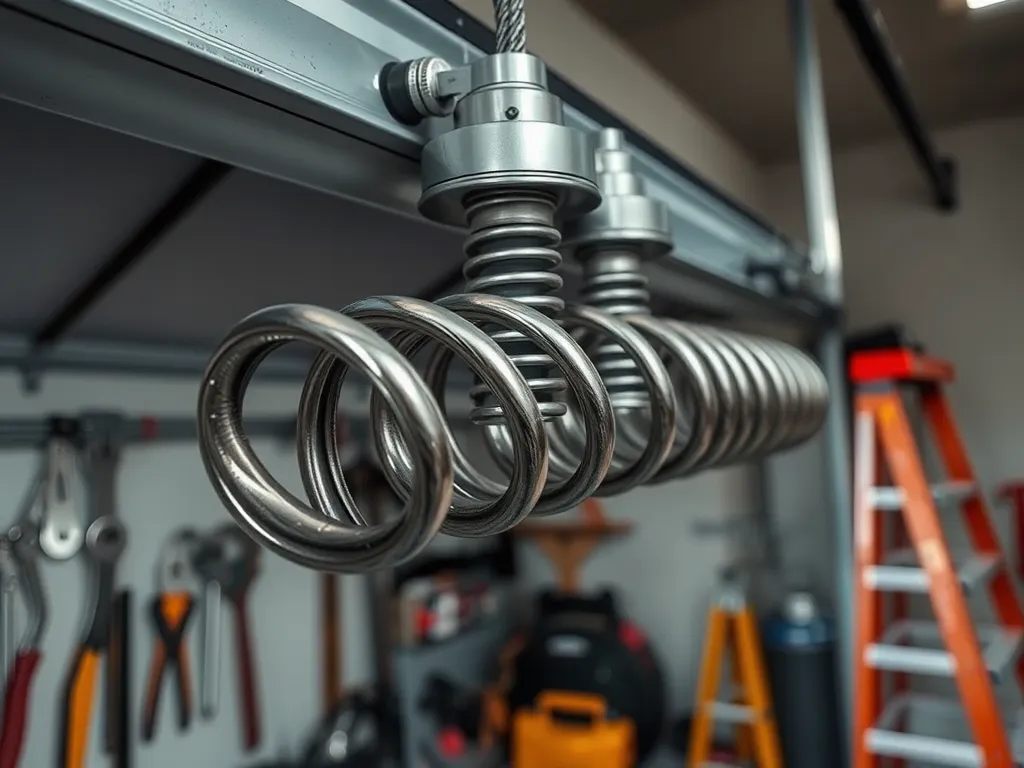Expert Tips for Replacing Garage Door Springs Safely

The Ultimate Guide to Garage Door Springs Replacement
Garage Door Springs Replacement is a crucial aspect of garage door maintenance that every homeowner should be aware of. Springs play an essential role in the functioning of garage doors, allowing them to open and close with ease. When these springs fail, it can lead to significant inconveniences and potential safety hazards. This article delves into everything you need to know about garage door springs, from understanding the types of springs to recognizing when they need replacement.
To ensure a reliable and safe operation of your garage door, regular maintenance and timely Garage Door Springs Replacement are essential. The springs are designed to bear the weight of the door and assist in its movement. Over time, wear and tear can lead to malfunction or failure of these springs. Therefore, being familiar with the signs that indicate a need for replacement is vital for any homeowner looking to maintain the functionality of their garage doors.
For all your maintenance needs, consult our comprehensive Spring repair guide.
When contemplating Garage Door Springs Replacement, it is also crucial to understand the various types of springs available in the market. The two most common categories are torsion springs and extension springs, each with its distinctive features and applications. Making an informed choice based on your garage door's requirements will not only extend the life of the door but also enhance its safety and performance.
Ensure a safe and durable solution by opting for Professional spring installation.
Attempting to perform a Garage Door Springs Replacement requires a comprehensive understanding of safety precautions, the necessary tools, and the potential impacts of improper installation. By making safety a priority and knowing when to seek professional help, homeowners can ensure a successful replacement process and the ongoing safety of their garage doors.
Finally, regular maintenance practices post-replacement can greatly increase the longevity and efficiency of your garage door springs. From lubrication techniques to inspection routines, understanding how to care for your springs is as crucial as replacing them when needed. This guide will equip you with all the information necessary to manage your garage door springs effectively.
Types of Garage Door Springs
Torsion springs are mounted above the garage door and coil up as the door closes. They are known for their durability and ability to carry heavy loads, providing a balanced lifting mechanism for the door’s weight. Torsion springs are typically used in heavier doors and can last up to 15,000 cycles, making them ideal for families with frequent garage use.
Learn how to tackle your next project with our DIY spring replacement instructions.
Extension springs, on the other hand, are located on either side of the garage door and stretch as the door is opened. These springs are generally used for lighter doors and are available in various lengths and strengths. Understanding how extension springs work, including their ability to expand and contract, is key to recognizing their limitations and ensuring proper usage.
The main difference between torsion and extension springs lies in their function and placement. Torsion springs provide better balance and can handle heavier doors more effectively, while extension springs require more space and can cause safety hazards if they break. When choosing between the two options, consider the weight of your door and the space available in your garage.
Selecting the right spring for your garage door involves evaluating several factors including door weight, frequency of use, and available space for installation. It is advisable to consult with a professional or refer to manufacturer specifications to make an informed decision that enhances the safety and functionality of your garage door system.
Signs Your Garage Door Springs Need Replacement
One of the first signs that your garage door springs may need replacement is the presence of unusual noises such as squeaking or grinding when you operate the door. These sounds often indicate that the springs are under strain or have lost their efficacy, making it essential to address the issue promptly to avoid further damage.
If you experience difficulty lifting your garage door manually, this can be another indicator that the springs are failing. A properly functioning spring system should allow for easy lifting of the door. If it feels excessively heavy or stuck, it’s time to consider a garage door springs replacement.
Visible wear or damage on the springs themselves, such as rust, cracks, or gaps, is a clear sign that immediate action is needed. Regular inspections should include checking the condition of the springs to catch any issues early, minimizing the risk of door malfunction.
Inconsistent door movement, such as the door reversing unexpectedly or not opening fully, can also suggest that your springs are beginning to fail. This erratic behavior not only affects convenience but poses significant safety risks. If you notice such inconsistencies, plan for a replacement as soon as possible.
Safety Precautions for Replacing Garage Door Springs
When attempting a garage door springs replacement, utilizing proper tools and gear is essential. Ensure you have spring winding bars, adjustable wrenches, and pliers tailored for the job. Wearing safety glasses, gloves, and appropriate clothing can also reduce the risk of injury during the replacement process.
Understanding spring tension hazards is crucial, as garage door springs are under significant pressure. They can cause severe injuries if mishandled. Before starting the replacement, ensure you carefully follow safety protocols to release the spring tension safely, minimizing any risk involved.
Supporting the garage door properly before removing or replacing the springs is imperative to ensure it doesn’t fall unexpectedly. Use C-clamps on the track below the rollers to secure the door in place, and avoid any movements until the springs are entirely replaced and secured.
It’s also wise to establish emergency shut-off strategies, such as disconnecting the garage door from the opener and ensuring that everyone in your household is aware of the precautions. Having a plan in case of unexpected issues can greatly enhance safety during the replacement process.
DIY vs. Professional Replacement
Deciding whether to tackle garage door springs replacement yourself requires consideration of your own mechanical skills and comfort level with tools. If you have prior experience with spring systems and feel confident in your abilities, a DIY approach may be feasible. However, caution is advised, as mishandling can lead to injuries or further damage.
Hiring a professional for garage door springs replacement comes with its own set of pros and cons. While it may save you time and ensure a safer installation, it does incur costs. A professional often guarantees quality workmanship and will handle any unexpected issues that arise during the service.
The cost comparison between DIY and hiring a pro often varies; DIY may seem cheaper initially, but consider the costs of new tools, potential mistakes, and the value of your time. In contrast, hiring a pro offers peace of mind but can be more expensive. Weigh your options carefully before making a decision.
If you opt for professional installation, finding certified professionals for the job is crucial. Look for reputable garage door service companies with strong reviews and warranties to ensure a dependable and quality replacement experience.
Tools Required for Replacing Garage Door Springs
Essential tools for DIY enthusiasts include spring winding bars, a socket wrench set, C-clamps, safety gear, and possibly a ladder if the springs are situated high. Ensuring you have the right tools will make the replacement process considerably smoother and safer.
Safety gear is crucial during the replacement process. Quality safety glasses, sturdy gloves, and protective clothing can help prevent injuries. Don’t compromise on safety when handling heavy and tensioned components like garage door springs.
Understanding spring winding tools is vital for successfully replacing your garage door springs. These tools help manage the tension as you install or uninstall the springs, making the process safer and more manageable. Familiarize yourself with their usage before beginning the replacement.
Creating a checklist for the job is an excellent way to stay organized during the replacement process. List all the tools needed, safety precautions, steps to follow, and any help you might require to ensure a thorough and efficient replacement experience.
Maintenance Tips for Garage Door Springs
Implementing regular inspection routines is essential for maintaining the health of your garage door springs. Check for wear, rust, or other signs of damage monthly, and address any issues immediately to prevent costly repairs down the line.
Lubrication techniques also play a significant role in extending the lifespan of your garage door springs. Regularly apply a suitable lubricant to the springs and other moving parts to reduce friction and wear, maintaining efficient operation.
Monitoring signs of wear, such as unusual noises or difficulty in operation, can help catch potential problems before they escalate. Being vigilant and responsive to changes in your garage door's behavior can save you from unexpected inconveniences.
Scheduling professional check-ups can offer a safety net for your garage door system. Annual inspections by certified technicians can identify and remedy potential issues, ensuring that your garage door springs remain in optimal condition.
